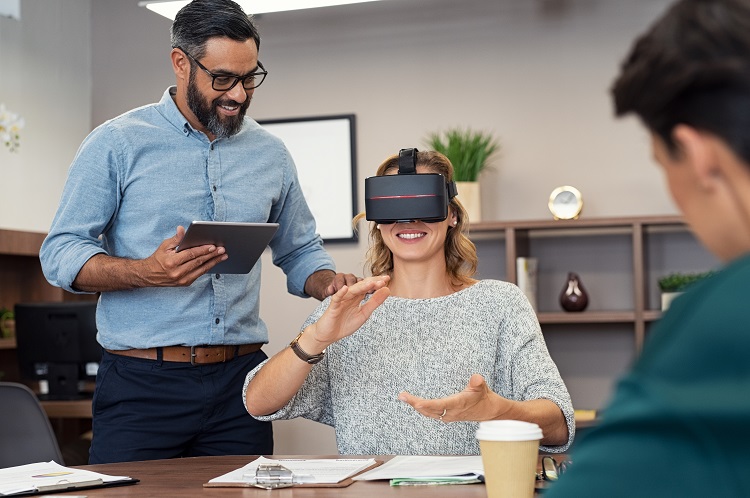How AR & VR Are Changing the Real Estate Industry

The growth of technology is impacting all industries, including real estate. Virtual reality and augmented reality have become especially popular due to the many benefits they offer real estate agents.
So, what are virtual reality and augmented reality? Both use computer-generated images to alter reality. The difference is how they do it. With virtual reality (VR), the viewer’s physical environment is replaced by a computer-generated one, which is generally accomplished by wearing a headset. Augmented reality (AR) does not replace reality, but instead layers computer-generated images over an existing image or video to change the original environment’s appearance. This is generally accomplished via an app. Combining VR and AR is called mixed reality.
As you can image, VR and AR can be very beneficial to you as a real estate agent! Let’s look at some of the benefits:
- Time savings. We all know how long it takes to show clients multiple properties. With AR and VR, you can show clients multiple properties without leaving your office! While nothing replaces seeing a property in person, showing clients VR tours of properties can cut down on exploratory visits, so you can focus on the properties of most interest. If you are the listing agent, using VR can also cut down on the number of showings you make of a property, as people can just view the VR tour online.
- Aid in visualization. While online photographs and a print description of a property are effective, VR and AR are more interactive and can give a better visualization of what a property can be that words cannot always accomplish. If you are selling a home that is currently under construction, VR can take a client through a digital rendering of what the home will look like when complete, and AR can furnish the home with the client’s preferences. Likewise, if you are selling a fixer-upper home, using AR can show the home’s potential by selecting new paint colors, updating flooring, making renovations, adding décor, and almost anything else that would make the property fit your client’s vision. Finally, remote buyers could benefit from this technology, as they may not be able to physically visit a property. With AR and VR, these buyers can tour properties in an interactive way that pictures cannot achieve.
- Cut staging costs. The ability to change surroundings with AR could potentially obsolete staging. The risk of staging is that the style chosen for staging may not appeal to all buyers. With AR, potential buyers can change out furniture and décor to match their preferences, helping them see the full potential of a property. This makes it more likely you will have a sale and allows you to cut staging costs.
Most VR and AR technology is available via apps, and these apps have lots of features! Besides the time savings, visualization, and cost-cutting benefits mentioned above, these apps can also gather property details by pointing your phone at a property from the outside, create floorplans, and show property boundaries.
Using AR and VR as a tool to supplement the traditional selling methods can give you a competitive edge, as it benefits both you and your clients. As this technology grows and evolves, it will undoubtedly become more prevalent in the marketplace. Are you currently using AR and VR? Tell us about it below!
Sources:
- https://thinkmobiles.com/blog/augmented-reality-real-estate/
- https://magazine.realtor/for-brokers/network/article/2018/05/augmented-reality-real-estate-s-next-disruptor
- https://venturebeat.com/2018/10/03/no-more-open-houses-how-ar-will-affect-the-real-estate-industry/
- https://www.realestate.bnpparibas.com/virtual-reality-vr-and-augmented-reality-ar-real-estate
- https://www.propertyme.com.au/blog/industry-news/augmented-reality-real-estate-examples
- https://www.bacancytechnology.com/blog/augmented-reality-in-real-estate-industry
- https://www.joinreal.com/blog/how-realtors-can-use-virtual-and-augmented-reality
- https://medium.com/datadriveninvestor/is-ar-and-vr-a-game-changer-for-the-real-estate-industry-285361f9182b
An insurance company that cares about you and insuring the things you wish to be insured.
Get a Quote> Find an Agent>

